It is with great sadness, nay, a metaphorical lump in my throat, that I admit… JUMP Math isn’t working for us this year. :-(
I feel like this is the oldest homeschool story in the book: a fantastic program that just doesn’t work for the kid.
I love JUMP because it’s a great program. The math is solid, the concepts are well-developed, strongly scaffolded, and rely on minimal verbal cueing in the book so the work doesn’t depend on your language ability. The book is also very minimalist – uncluttered and easy to understand.
Unfortunately, between Grade 2 and Grade 3 it also makes the cosmic leap from pages that look like THIS:
(nice, bright, spacious, lots of examples, lots of whitespace)
…to pages that look like THIS:
I wouldn’t say these are hard pages, but for Naomi Rivka, this has been a giant leap. She’s definitely capable of doing the work, as you can see here…
This page is actually an exception because she’s done every section. Normally, once I’m certain that she’s able to handle the concepts on a given page, I’ll cross out several of the examples, usually ones we’ve worked through together.
But still – the big, full pages frighten her in a weird way. Like I said, it’s a leap, and it hasn’t been a comfortable one for her. She wants her whitespace back, and as much as I appreciate the distraction-free approach, there is such a thing as TOO minimalist. If you look at the second blank example page I’ve given you up above, you’ll notice a series of problems about birds and their eggs. Accompanied by a teeny-tiny stock line drawing image of a bird. Blah. In Books 1 and 2, by contrast, when images are necessary, the images are custom-drawn to be friendly and appealing, if almost surreally diverse:
The clip art in Book 3.1, by contrast, is far less appealing:
Naomi Rivka may not realize exactly what’s giving her the wrong vibes about this book, but I think it’s some combination of scariness (lots more text on the page) and the absence of the friendly vibe that the first books gave her. Notice how in the samples of the JUMP 2.1 text, all the examples are offset with grey highlighting??? In 3.1, that doesn’t happen, so to a non-excellent reader – as much as she loves to read, Naomi Rivka still can’t grasp a whole page of text at a glance – it looks a heck of a lot more like one undifferentiated page of work.
One more example, with pages from the 3.1 book (left) and 2.1 book (right):
On the left, the top section, separated by a dashed dividing line, is the information that will help you solve the problems below. It isn’t MORE work, it’s essential background and HELP to perform the task at hand. But Naomi looks at it and panics. Whereas she’d probably look at the page on the right, with the upper section shaded in grey, and relax while she waited for me to explain the background – or cheerfully read through it herself so she could race through the six problems that follow.
Subtle differences… very subtle. For any other kid, these might not be huge, but for Naomi, it is gradually meaning the difference between enjoying math and not enjoying math, and I can’t stand to see that happen.
So what’s next??? Singapore, aka Primary Mathematics. A very mainstream, very popular homeschool math program. Indeed, I’m not terribly excited about it because it is so very mainstream. According to this placement test (which Naomi didn’t attempt; I went through it asking myself which questions she could handle), she’s probably going to do best starting back at Level 2A. As with JUMP, there are two levels per year. Unlike JUMP, however, in which you only purchase the workbooks, there are also two textbooks and home instructor guides per year, meaning the program costs quite a bit more money overall. Not costly, as these things go, but still… more than we have been spending, for a program that’s not guaranteed to help.
The sample pages look good – black and white, still fairly uncluttered, but tons and tons of the whitespace and pictures that I think will be good for her.
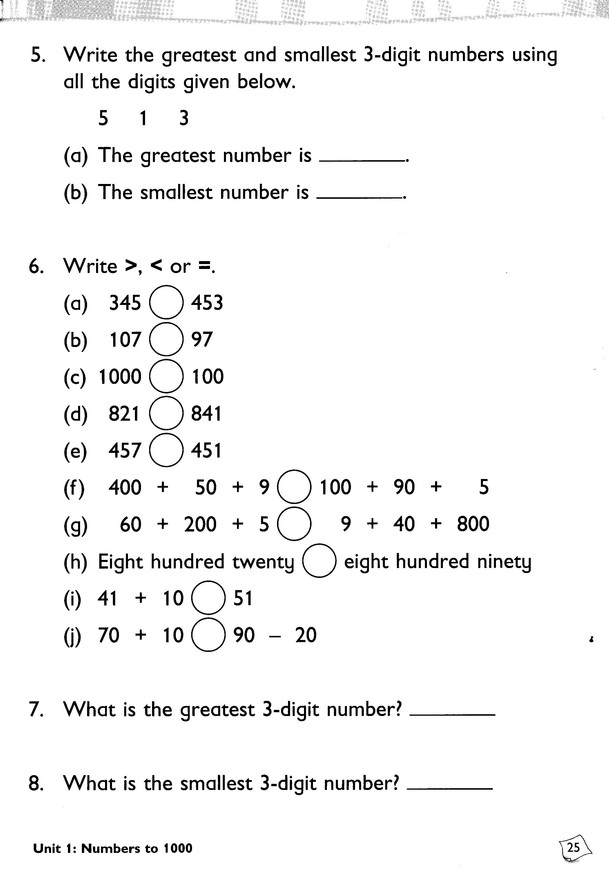
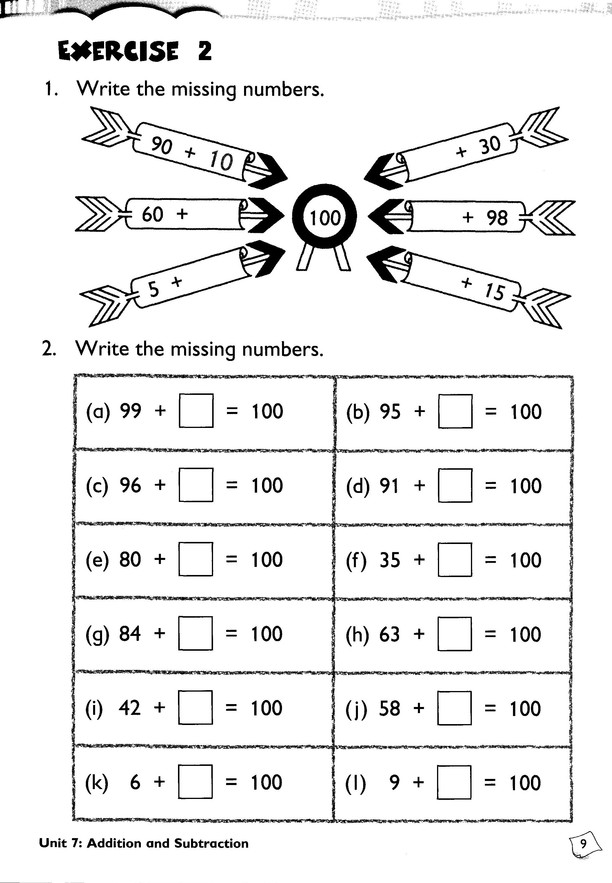
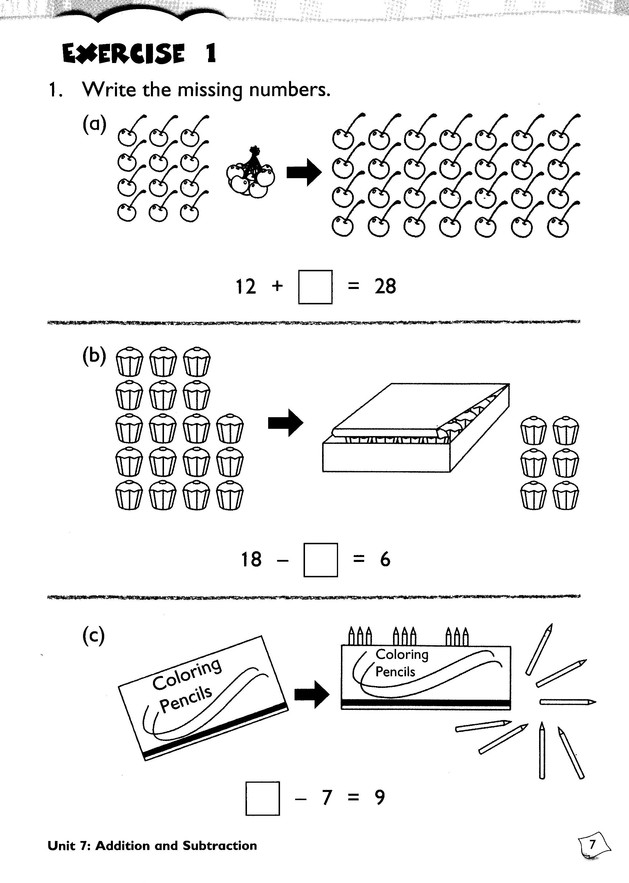
The program also looks more mathematically rigourous; hence, placing her in 2A when she has already finished the JUMP Grade 2. I don’t think that will come as a blow to her ego; I really believe that, as with her Hebrew text, she’ll be happy to be working down a level if she perceives it as material she can handle more adeptly. Indeed, from what I’ve seen, the 2A material is enough of a challenge that it will probably trick her into doing more math stuff and acquiring more fluency in the long run.
It’s been very odd and disconcerting watching her math skills falter given that she got what I felt was an exceptionally good head start. If we had more time, I’d go back to doing Verbal Math drills. If we had more time, I’d go back to doing skip counting before any math lesson. (Have I mentioned that all my homeschooling best-laid-plans have somewhat fallen apart this year??? But that’s for another post… don’t fear; it’s all good stuff like field trips. But still. Utter chaos.)
Meanwhile, Mathematical Reasoning: Beginning 2 an obscure and cluttery-colourful book from The Critical Thinking Co. has utterly captivated Gavriel Zev’s math imagination. I tried doing JUMP Math with him – as with Naomi Rivka at that age, he still can’t write well enough to do math on paper. When Naomi was in that place, I used Miquon and loved it. But for Gavriel Zev, the Cuisenaire rods are a building toy – period. He seems absolutely incapable of abstracting from them. I could just let him play with the rods, and do various pre-Miquon exercises with him, but he’s actually a workbooky he kid: he wants to feel like he’s “doing” school.
 So I was stuck and in a fit of I don’t know what ordered this overpriced thick paperback workbook, which has somehow, miraculously, answered all my questions about how to help him make the leap from concrete enumeration to more abstract mathematical thinking and operations.
So I was stuck and in a fit of I don’t know what ordered this overpriced thick paperback workbook, which has somehow, miraculously, answered all my questions about how to help him make the leap from concrete enumeration to more abstract mathematical thinking and operations. 
Brightly illustrated with the kinds of clip art I generally hate, this book manages to captivate his imagination and stimulate his math brain, getting him counting, comparing quantities, shapes and even beginning rudimentary mathematical operations. Many of the pages are interactive, with no written component at all; I read him a question (he can read it for himself, because his reading level is so far beyond his math level, but I read it anyway) and he points to the shape or number or picture.
 So for whatever reason – the colour, the clip art, the interaction, the easy problems – he gets super-excited whenever I pull out this book. Not that math was a struggle; he’s always very gamely tried to do the work, but given his low frustration threshold, it didn’t always turn out happily. We also continue doing informal verbal math, mostly using fingers, which entrances him. We add, we take away… and we learn – hurrah!
So for whatever reason – the colour, the clip art, the interaction, the easy problems – he gets super-excited whenever I pull out this book. Not that math was a struggle; he’s always very gamely tried to do the work, but given his low frustration threshold, it didn’t always turn out happily. We also continue doing informal verbal math, mostly using fingers, which entrances him. We add, we take away… and we learn – hurrah!
If I sound somewhat peeved about this book, it’s only because the one I ordered for Naomi Rivka (Mathematical Reasoning Level C) is so obscure and weird and not keyed to anything else we were doing that I don’t let her waste her math time using it (even though the colourfulness does appeal to her). So that one was a total waste. Blah.
Have you ever had to ditch any programs you love? Is it always this painful???

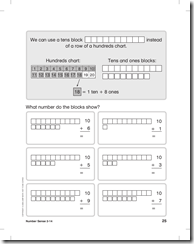

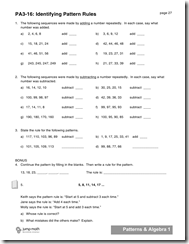
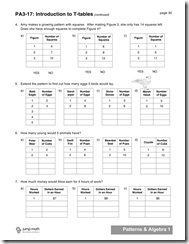
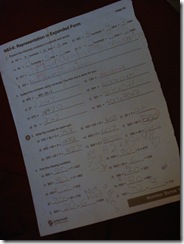




Yep. We ditched our spelling already this year, and have gotten through a few others. I agree that it's painful, but I think it's not living up to our expectations. We think it should be good, so when it's not a good fit...well, we must be the reason! But I'm trying to ignore that feeling. ;)
ReplyDeleteWe have a fun math set called Inchimals for my K boy, although he is conceptually past it and did the entire booklet in the first week. He also loves our Montessori bead cabinet, and the K Math Reasoning (a different level from the one you mentioned.)
Yep, we've been using Horizons Math which is christian based but hasn't been too much so until we got into the 4th grade workbooks. So I finally decided to switch my older daughter into Teaching Textbooks which are interactive DVD's. So far I'm really excited about it though she's only been using it a few weeks. I like that they have a gradebook that allows the parent to see what problems were missed, whether they attempted a 2nd time or checked how to solve the problem. The only thing is that usually most kids would be able to do a grade level higher than their current math program but they offer placement tests. They also have chapter samples you can do on their website. It was still a difficult decision to switch though.
ReplyDelete